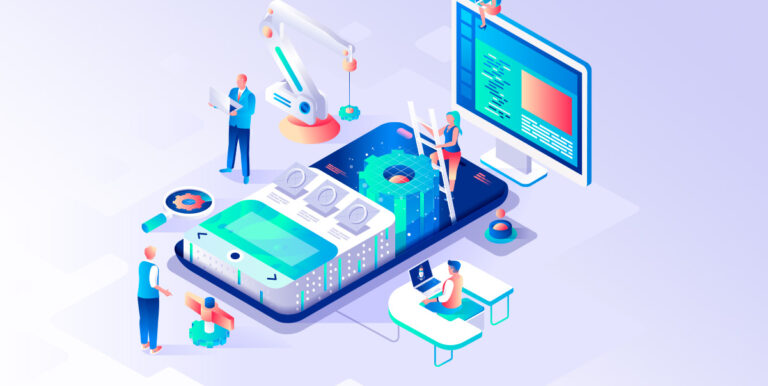Did you know?
- Statista suggests that 29% of startups fail because they run out of cash. By building and launching an MVP, companies can validate their ideas without investing large sums of money upfront.
- According to a survey by Harvard Business Review, 68% of companies that use MVPs report a decrease in time to market by at least 20%.
- Research by Neil Patel indicates that 42% of startups fail because there’s no market need for their products.
- MVPs allow companies to focus on solving specific customer pain points. Research by Bain & Company shows that increasing customer retention rates by just 5% can increase profits by 25% to 95%.
What is Minimum Viable Product - Definition
The Minimum Viable Product (MVP) is at the core of the Lean Startup methodology, which was introduced by Eric Ries in 2011. This approach guides entrepreneurs on how to effectively pilot a startup.

An MVP is like a starter version of a product that focuses on solving a key customer problem with only the most essential features to demonstrate its value.
An MVP’s big plus is that it lets you test your product idea early on, so you can see if it’s on the right track. This saves a ton of time and money compared to building a full-blown product before getting any feedback from users.
When you’ve got a team working on creating the first version of your product to roll out to customers, like a mobile app or website, it’s important to keep the focus tight.
A well-planned MVP gives you valuable insights into how users actually use your product. This feedback loop helps you make informed decisions about improving it based on real user experiences.
Start with the core features that will solve your users’ most pressing problems. This way, you can stay agile and make sure you’re delivering real value to your users from the get-go.
Why it's so important to start with MVP? Why do we need it?
An MVP enables you to release the first version of your product to validate its efficiency in addressing the specific problem your customers face. While this concept might seem simple, it is often overlooked in practice.
Many products are developed with a range of impressive features and polished visuals, yet they fail to solve the core user issues. The ultimate goal is to create a product that solves a user’s problem while also being a standout offering for your target audience.
Explore our MVP project – a Cloud SaaS property management system PropsTech.
The benefits of MVP product development process for your startup idea
- Time to market: Launching an MVP allows you to quickly introduce your product to the market, potentially giving you a head start over competitors and attracting highly engaged early users or brand ambassadors.
- Cost savings: Trying out a simplified version with real users before the release can greatly cut down on development expenses. By starting with an MVP, you ensure your investment is directed towards a project with a higher likelihood of success.
- Customer insights: When going through the MVP stages, you can make sure that moving forward to full product versions is a viable step. This method helps you figure out what resonates with your target market and what doesn’t, broadening your potential user base and lowering the chances of failure.
- Market trends awareness: Deploying an MVP among your target audience allows you to identify prevailing market trends and user preferences that will inform the development of the full product.
- Attracting investment: Showing off a working MVP with a dedicated group of early users can convince potential investors. Now, you can prove that your business model works. This mitigates the risks of lacking market need (42% of startup failures) and running out of funds (29%).

How to build a Minimum Viable Products
Kicking off with a discovery phase is a smart move because it saves resources in the long run. This initial stage enables you to establish success criteria.
The discovery phase facilitates efficient workflow organisation around these core components. Incorporating research and proactive client communication empowers the development team with essential data and insights, laying the groundwork for future product development.
Step 1: Conduct research
Before jumping into MVP development, ensure that your plan meets the needs of your target users. Sometimes, ideas may not align with market needs. Conduct thorough market research and run surveys to gather as much information as possible, as this can significantly enhance your chances of success.
Additionally, keep a close watch on your competitors’ offerings. Understanding what they provide can help you differentiate your product and ensure it stands out in the marketplace.
Step 2: Specific idea
Understanding the value your product offers to users is a top priority. Ask yourself how your product benefits them, why they would choose to buy it, and what makes it indispensable. These questions help articulate your idea more effectively.
You have to clearly define the core benefits your product promises. Since an MVP is about delivering value early, use these core benefits as a foundation to shape your MVP. This strategic approach ensures that MVP development stays focused on delivering genuine value to users right from the beginning.

Step 3: Put yourself in the user's shoes
The design process is another important stage in developing an MVP. Structure the design of your digital product to be user-friendly. Consider the user flow—the path users take through your app—as a key component of the product’s future success and user satisfaction.
Check out our MVP web app development of Monitoring system for Highrise.
Step 4: Prioritising features
At this stage of MVP development, list all the features you envision for your product. Once you have a list, prioritise the features by asking questions like, “What do my users truly need?” and “Am I offering them something valuable?”
Categorise the features as high, medium, or low priority. This prioritisation helps define the scope for the basic product version and guides the MVP development.
To visualise the project, collaborate with a design team to create an MVP prototype. This step breathes life into your concept and helps refine the design and functionality before full-scale development kicks off.
Step 5: Building MVP and gather user feedback
After thoroughly researching the market and user needs, and prioritising features, you’re ready to create your MVP. Keep in mind that an MVP isn’t supposed to have the same level of polish as the final product. This approach allows you to gather valuable feedback for refining and improving future product iterations.
Step 6: Testing
Once product development is done, the next step is testing. Quality Assurance engineers take the lead in this initial phase, working diligently to improve the product’s quality before it is released to the public.
Remember that the most valuable insights often come from the end-users themselves. They can provide honest feedback about what elements of the product are lacking or unnecessary. After gathering this user feedback, refine and improve your product. Continue this cycle of testing, incorporating user input, and refining until the product reaches a level of quality and functionality that is ready for broader release.
Launch your MVP with Altamira
Are you looking for support in launching the MVP for your product? Altamira brings over a decade of experience in MVP development to the table, with numerous projects in our portfolio.
How we can help?
- Hire our skilled developers, designers, and testers who can bring your MVP to life. Their technical expertise ensures that the product is built to address the user’s real problem.
- With established development processes and workflows, we streamline the MVP development cycle, ensuring timely delivery without compromising on quality.
- As your MVP gains traction and requires scaling up, we can easily adapt to accommodate the evolving needs of your project.
- We will help you identify and rectify any issues before launch.
- Beyond the initial development phase, we provide ongoing support and maintenance for your MVP, addressing any bugs or introducing new features based on user feedback.
Take advantage of our expertise, resources, and experience to accelerate the development of your MVP while ensuring a high-quality end product. Contact us to learn more!






